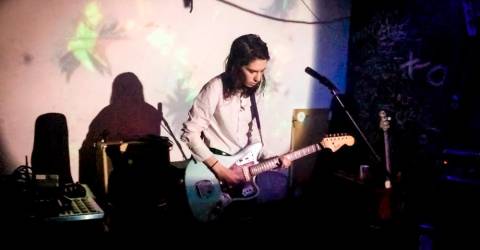freedom through music

We explore the once undisclosed aspects of Malaysia’s underground music subculture
THE The way people listen to music has undergone a drastic transformation since mass media began dominating the industry. People can be seen gravitating towards pop songs, contemporary music, and modern and more innovative genres such as K-pop, which can be heard in virtually all forms of social media, including music streaming apps.
Despite all this, Malaysia’s underground music culture is an unrecognized phenomenon that few people have heard of. The well-established and specialized underground culture in Malaysia is known as the independent (indie) or urban Malaysian music scene and reached its peak in the late 1990s.
It’s not hard to pin down what exactly is meant by the term “underground music” these days. Underground musicians demand a great deal of creative freedom and are not too dependent on mainstream media.
In Malaysia, mainstream music refers to artists who have contracts with major record labels and make commercially popular music, while underground media is subculture focused.
Underground music includes styles and subgenres rarely heard in popular music, whether pop, techno, rock, metal or jazz.
The Malaysian underground scene is dominated by guitar bands with a preference for rock music, but there are also other bands with various musical influences, such as hip-hop, electro and dance, which we can hear on the stage.
The majority of musicians in this local scene are self-organized, DIY-focused groups or collectives that focus on creating, sharing, and collectively enjoying music.
Technology has made a big difference over the past two decades. Specialized websites and other online platforms abound in today’s digital world. This is where underground artists can now market their albums, gigs, venues and businesses by distributing them online, primarily on social media.
Story
It was in the mid-1980s that British-American music and magazines like NME traveled to Malaysia and spawned a new generation of heavy metal and punk bands across the country.
Underground subcultures spread positive and egalitarian social ideas that gave young Malaysians an alternative.
By the end of the 1990s, Kuala Lumpur’s now historic Central Market had become a hub for a number of young, multi-ethnic Malay artists and musicians who were fed up with the increasingly conservative attitudes of the rural Malay countryside.
These early bands saw the end of musical freedom in Malaysia, where long-haired, ripped-jeans “mat rockers” (Malaysian hard rock fans and musicians) like Search and Wings (a Malaysian hard rock band) reached great popularity. in Malaysia in the 1980s.
They filled many stadiums in Kuala Lumpur with their mix of European hard rock melodies and Malay language songs, attracting fans from all walks of life.
However, between 2001 and 2006, the tide changed. Fans of the genre were branded “satanic black metal enthusiasts” by increasingly vocal religious authorities, musicians were accused of “gratuitous adultery and desecration of the Quran”, and their music was muted.
In other words, the Malaysian media exaggerated what was happening at music events, confiscating albums and canceling concerts due to hysteria.
Over time, the genre began to return to the scene, although much more discreetly than before. It was then that notable rock bands such as Hujan and Meet Uncle Hussain emerged onto the scene, once again introducing the genre to a modern audience of fans.
Public acceptance
Even with the emergence of new technologies and the acceptability of materials in the way music is performed, underground music and concerts continue to thrive. And what makes it special is that it has been accepted by most people and changed for the better.
Aniq Ammar Ekhwan, the guitarist of Hayley’s band Komet, noted that underground artists aim to convey their thoughts and emotions, and the same goes for audiences.
“Before, people only attended shows of their favorite genre. [of music]but now the shows themselves are made up of different genres and it all blends together,” he said.
“It is here that the concept of artistic equality is balanced and neutralized by the concept of harmony.”
Aniq believes that this type of healthy crowd support for underground events and culture will continue and that the future is bright if this freedom of expression continues to flourish.
